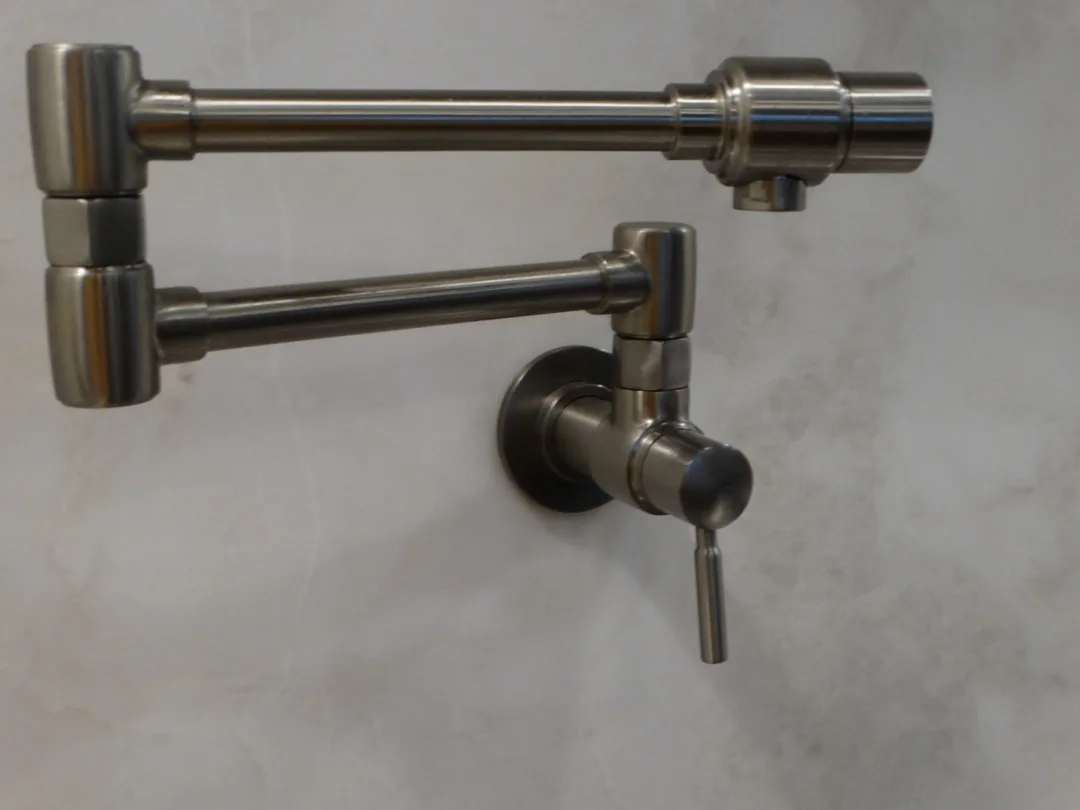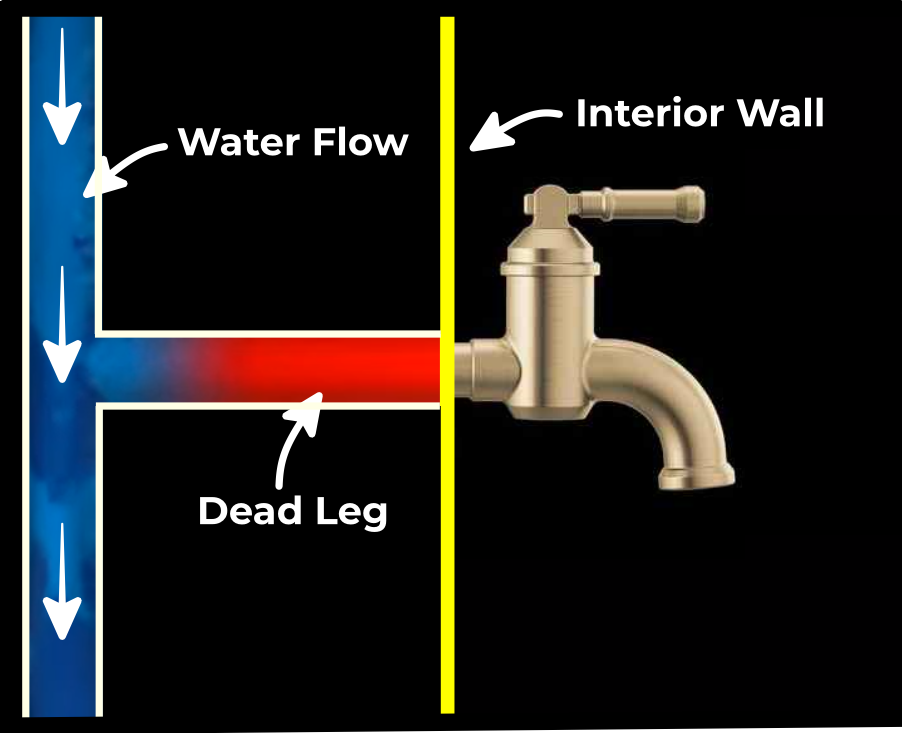Estimated reading time: 5 minutes

A dead leg in a plumbing system refers to a section of piping that receives no or infrequent water flow. This is common in bathrooms planned to be finished later and in seldom-used plumbing fixtures, such as a wet bar sink or a vacant home listed for sale in a slow market.
Specifically, a dead leg is a pipe length connected at both ends to active plumbing lines but seeing little or no regular water usage. This condition is more frequently found than you might realize. One of the most obvious examples is a pot filler. When a fixture isn’t used, water stagnates in that section of piping.
Dead legs are problematic because:
- The stagnant water provides an environment for bacterial growth and the buildup of sediments/deposits.
- The lack of flow fails to replenish this water with freshly treated water from the supply lines.
- It creates a potential cross-connection where contaminated water could migrate back into the active plumbing lines.
Common areas where dead-legs occur:

- seldom-used faucets/fixtures,
- capped-off branches of piping,
- plumbing for seasonal/vacant buildings,
- and insufficiently sized piping runs.
Proper plumbing design aims to minimize dead-legs or provide a means to flush them periodically.
The time it takes for water to become compromised in a dead leg depends on several factors, but it generally happens faster in hot water lines than in cold water lines.
For cold water dead legs:
- It can take weeks or months for bacterial growth and biofilm to develop, depending on factors like water quality, presence of nutrients, etc.
- Cold water is less conducive to bacterial growth than warm water.
- However, sediment and mineral buildup can still occur over time in stagnant cold lines.
For hot water dead legs:
- Bacterial growth happens much faster, sometimes in just days or weeks.
- Hot water temperatures (above 105°F) provide ideal conditions for certain bacteria like Legionella to thrive. Legionella is a genus of bacteria, including Legionella pneumophila, the principal cause of Legionnaires’ disease. Legionnaires’ disease is a potentially serious type of pneumonia (lung infection) transmitted by inhaling contaminated water droplets from cooling towers, hot tubs, showers, and faucets. The bacteria thrive in warm, stagnant water and can pose a health risk if allowed to proliferate in building water systems.
- Scale and sediment also accumulate quickly on the insides of hot water dead legs, providing a breeding ground for bacteria.
So, while both hot and cold dead legs ultimately pose water quality risks, the problems manifest faster in dead legs on hot water lines due to the elevated temperatures promoting rapid bacterial and mineral growth.
For a pot filler specifically, having it connected to the cold water line slightly reduces the risk compared to a hotline connection. Either way, infrequent use can quickly lead to stagnant water conditions that, over time, compromise fixture water quality.
Controlling Dead Leg BioFilm
The best approach to help control biofilm is to flush through the pipework and outlets/fixtures regularly enough to prevent stagnant water from pooling in the pipes.

Another option is to drain the water from a pipe run if you don’t plan to use the fixtures regularly. This suggestion directly applies to a future bath in a hot attic. Install a shut-off valve within 2 or 3 pipe diameters of the water source.
Water quality can also contribute to biofilm. A water source that lacks disinfectants, such as untreated well water, is particularly vulnerable to the negative effects of dead leg piping. Well water can contain higher levels of organic matter and minerals that bacteria utilize as a food source, promoting their growth. Install a whole-house water filter if you’re on a well. Installing a water treatment system like chlorination or UV disinfection can help mitigate this issue for well water supplies.
Take Care!
Dead legs in plumbing systems can lead to serious water quality issues by allowing stagnant water to accumulate and bacteria/biofilm to proliferate. While hot and cold dead legs pose risks, the problems manifest faster in hot water lines. Seldom-used fixtures like pot fillers are particularly susceptible to becoming dead legs. To maintain safe water quality, designing plumbing systems that minimize dead legs, installing flushing valves, and implementing a regular flushing regimen for infrequently used fixtures and lines is crucial. Water treatment solutions may be required for problematic dead leg areas or compromised water sources like wells. Vigilance in addressing dead legs is essential for protecting your health and preventing biofilm hazards.
- - - - - - - - - - - - - - - - - - - - -